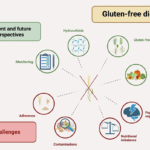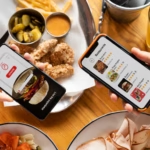Social media has transformed the way we connect, shop, and share our lives. At the heart of this digital revolution are influencers—those charismatic personalities who seem to have it all figured out. With just a swipe or a tap, they can sway opinions and drive trends like never before. But behind the glossy photos and curated feeds lies a world of chaos, drama, and sometimes even deception.
Enter #InfluencersGoneWild—a phenomenon that captures both the allure and absurdity of influencer culture. From extravagant lifestyles showcased in dreamy vacations to jaw-dropping scandals that leave us shaking our heads, social media influencers navigate an unpredictable landscape where fame is often fleeting. This blog post takes you on a deep dive into their world: exploring their rise to stardom, unveiling the darker side of influence, examining societal impacts, and discussing what regulation might mean for this wild ride.
Get ready for an eye-opening exploration as we uncover what happens when influence goes off-script!
The Rise of Social Media Influencers
The rise of social media influencers is nothing short of remarkable. Just a few years ago, fame was typically reserved for celebrities and public figures. Today, anyone with a smartphone can become an influencer.
Platforms like Instagram, TikTok, and YouTube have changed the game. They provide a stage where ordinary individuals can showcase their passions to millions. Whether it’s fashion, fitness, or travel, these creators build dedicated followings based on authenticity and relatability.
Brands quickly recognized this shift. Collaborating with influencers allows them to tap into niche markets in ways traditional advertising can’t match. The results? Skyrocketing engagement rates and loyal consumer trust.
As followers seek genuine connections over polished marketing campaigns, the influencer phenomenon continues to thrive—fueling trends that ripple across cultures globally. It’s a new age where influence isn’t just about talent; it’s about connection in the digital landscape.
The Dark Side of Influence: Fake Followers and Paid Promotions
The allure of social media fame is powerful, but it often comes with a shadowy side. Many influencers resort to purchasing fake followers to inflate their numbers and enhance their appeal. This can create an illusion of popularity that misleads brands and audiences alike.
Paid promotions add another layer to the complexity. While they can provide income, it’s essential for followers to discern genuine recommendations from sponsored content. The line between authenticity and advertising blurs easily in this environment.
Brands sometimes turn a blind eye, prioritizing reach over engagement quality. This practice undermines trust not just between influencers and their audience but within the entire influencer ecosystem.
As consumers become savvy about these tactics, they might question what’s real versus what’s manufactured in the digital space. Understanding these dynamics is crucial as we navigate this intricate world of influence.
The Pressure to Maintain a Perfect Image Online
The online world thrives on perfection. Influencers feel this pressure acutely. Every post is a curated masterpiece, crafted to draw admiration and engagement.
Behind the filter, many face anxiety and self-doubt. The constant chase for likes can create an exhausting cycle. Seeking validation becomes an everyday battle.
This pursuit of flawless representation often leads to inauthenticity. Followers may gush over beautiful snapshots while unaware of the struggle behind them.
In striving for a perfect image, influencers risk losing their true selves. Authentic connections can fade into the background as they prioritize aesthetics over reality.
As social media evolves, so does this expectation of perfectionism. It raises questions about authenticity and mental health in an increasingly visual culture where everything seems polished yet fragile.
Controversies and Scandals Involving Influencers
Controversies surrounding influencers often grab headlines. From feuds to questionable endorsements, the social media landscape is rife with drama.
Take the infamous Fyre Festival debacle. Influencers promoted it as a luxury getaway, but attendees faced chaos instead. Trust was shattered overnight.
Then there are cases of cultural appropriation. Some influencers have been criticized for adopting styles from cultures without understanding their significance. This has sparked conversations about respect and authenticity in online spaces.
Scandals can also arise from misleading advertisements. Many influencers face backlash when followers realize they haven’t disclosed paid promotions properly.
Missteps like these expose the fragility of influencer reputations. A single miscalculation can lead to public outcry and swift consequences on social platforms.
In this chaotic environment, discerning between genuine content and manufactured personas becomes essential for audiences navigating influencer culture.
Impact on Society and Mental Health
The influence of social media personalities extends beyond marketing. It seeps into the very fabric of our society and personal psyche.
Many users find themselves caught in a cycle of comparison. They scroll through curated lives that seem unattainably perfect. This can lead to feelings of inadequacy or anxiety, particularly among younger audiences.
Moreover, influencers often shape societal norms and values. Their endorsements can affect everything from beauty standards to lifestyle choices. Such power carries responsibility; not all influencers use it wisely.
Mental health issues like depression are increasingly linked to social media usage. The constant need for validation can take a toll on self-esteem and well-being.
Community-building is another facet worth mentioning, as some influencers create safe spaces for dialogue around mental health struggles. Yet this alone doesn’t negate the potential harm their platforms may cause if left unchecked.
Regulation and Accountability for Influencer Culture
Regulation in the influencer space is a hot topic. As social media platforms grow, so does the need for guidelines. Influencers often operate without clear rules, leading to a chaotic environment.
Governments and organizations are beginning to take notice. Many countries have started implementing regulations regarding advertising disclosures and transparency. This move aims to protect consumers from misleading promotions.
Accountability is also crucial. Brands should be held responsible for their partnerships with influencers who engage in deceptive practices. Trust can easily erode when followers discover that endorsements were paid or manipulated.
Social media platforms themselves play a role too. They could enforce stricter policies on fake follower counts and engagement metrics, fostering authenticity within the community.
The landscape is changing rapidly as awareness increases about these issues. Efforts toward regulation may shape how influencers operate in the future while ensuring they maintain ethical standards.
Balancing the Benefits and Drawbacks of Social Media Influencers
Navigating the world of social media influencers is a mixed bag. On one hand, they can inspire trends and foster community engagement. Their ability to connect brands with targeted audiences is invaluable in today’s digital landscape.
However, this influence comes at a cost. The pressure to present an idealized life often leads to burnout among influencers. They may sacrifice authenticity for sponsorship deals or follower counts, resulting in content that feels less genuine over time.
Moreover, followers are not always aware of the behind-the-scenes realities. This disconnect can create unrealistic expectations about lifestyle and beauty standards.
Yet, when used responsibly, influencer marketing can drive positive change. It has the potential to raise awareness around important causes and spark meaningful conversations.
Striking a balance between authenticity and commercialism remains crucial for both influencers and their audiences alike. It’s essential to approach this dynamic landscape with both enthusiasm and caution.
Conclusion
The world of social media influencers has undeniably transformed the landscape of communication and marketing. With their rise, we witness both the brilliance and the chaos that comes with digital fame. While they can inspire millions and drive trends, there’s an undeniable shadow lurking – from fake followers to scandals.
As these influencers strive for perfection online, many feel pressured to maintain unattainable standards. This relentless pursuit often leads to mental health struggles amongst not only those in the spotlight but also their audiences who compare themselves to curated lives.
Regulation is still catching up with this fast-paced industry. As brands invest heavily in influencer partnerships, it raises questions about transparency and authenticity. Society grapples with balancing admiration for creative expression against concerns regarding accountability.
Navigating through this duality is essential as we engage more deeply with influencer culture. Understanding its implications helps us appreciate its impact while remaining critical of its pitfalls. The journey of influencers remains wild; one filled with potential but also riddled with challenges that demand our attention and reflection on what it truly means to be “influenced.”










